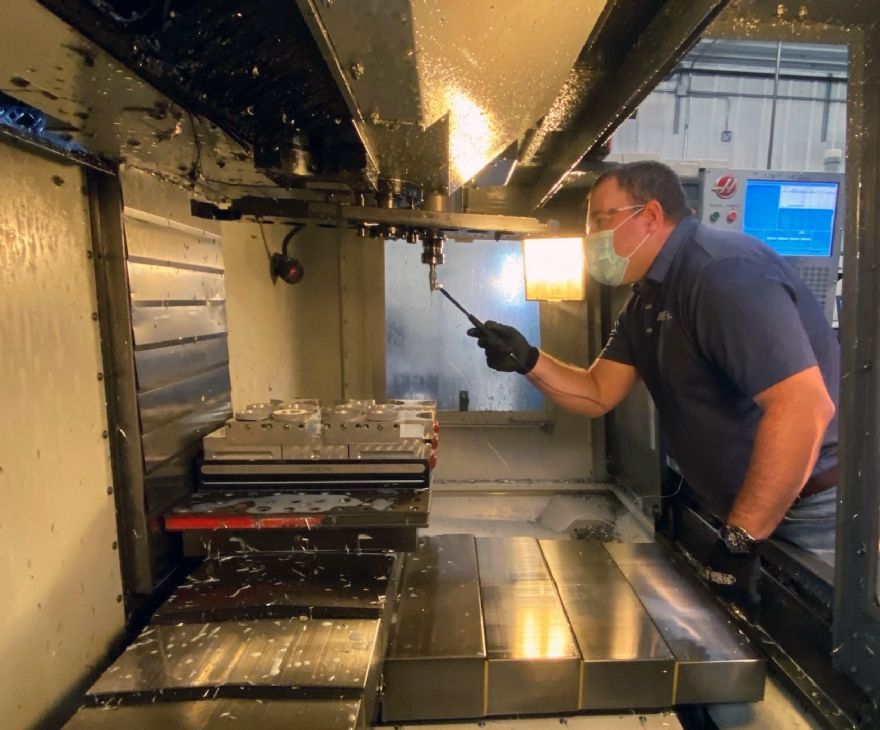
Any engineer knows the consequences of cutting tool vibration when undertaking milling operations can be disastrous. Excessive vibration and tool deflection will instigate poor surface finishes, reduced tool life and accuracy - subsequently increasing costs through inferior cutting tool performance.
Add in the potential for catastrophic tool failure and the cost escalation can be significant. However,
MSC Industrial Supply Co has overcome this problem with the introduction of MSC MillMax, a service that is exclusive to the company.
For generations, machine operators have tentatively followed the prescribed cutting speeds and feeds based on manufacturer recommendations, having to later reduce cutting parameters and productivity rates based upon excessive tool vibration and deflection.
This tool chatter can be caused by a seemingly endless number of factors that result individually or collectively from the machine spindle, the tool holding configuration and the cutting tool. Every machine tool and its respective tooling configuration operates at a unique frequency.
Engineers can only hope for a ‘best possible outcome’ by relying upon engineering experience, best practice, and in some cases even luck, to attain the best possible outcome. Now, MSC has addressed the dilemma with a data-driven approach.
The new MSC MillMax service from MSC analyses and records the frequencies and interprets the data to provide the customer with the optimal machining parameters, replacing guesswork with exact scientific data.
Optimised machining parametersMillMax undertakes a simple ‘tap test’ that analyses and records the frequencies of the tool in a matter of minutes. MSC enngineers can then interpret the collected data and provide the end user with a new set of optimised machining parameters.
Easy to set up, the process only requires a vibration sensor to be attached to the cutting tool to record the data and an impact test with a nylon impact instrument that has a built-in vibration sensor to register the sensitivity of the tap. When the sensor is attached to the cutting tool, and the ‘tap test’ is conducted, the resonance and frequency of the cutting tool are recorded.
From this, the MillMax software first determines whether the impact instrument has connected with the cutting tool sufficiently with a ‘go and no-go’ result and when the connection is successful, it correlates the information from the sensors with input parameters completed by an MSC engineering expert - realising the optimal cutting parameters. This intricate scientific test is conducted at speed with cutting tool data and the subsequent machining parameters now determined in minutes instead of hours.
Through an easy-to-use dashboard, the MSC engineer can apply the dynamic cutting calculator within MillMax to create a new set of speed and feed parameters as well as generating the optimal cutting width and depth associated with the material it is machining.
Correlating the data from the frequency and deflection of the cutting tool and combining this with pre-defined parameters from the operator such as the material, machine, max spindle configuration and tool type – MillMax can take productivity to the next level with just a few simple steps.
Furthermore, MillMax reduces spindle load and power consumption while prolonging the service life of a machine tool, demonstrating environmentally sustainable best practice.
Already proving popular in the USA, where it was first launched in 2020, the new MSC MillMax system is recording an average 170% improvement in material removal rates with a 40% decrease in cycle times.
Meanwhile, in the UK, MSC is finding extremely positive outcomes from early customer trials. Customers are finding that will MSC Millmax they can improve their process reliability, improve tool and spindle life, improve surface finishes and reduce chatter, as well as turbocharge their productivity levels.